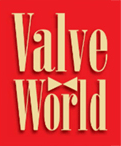Featured Story
- Actuation
- End-Users
- Featured Story
- Industry News
- Innovations and solutions
- Instrumentation
- Interviews
- Materials & Manufacturing
- News
- Noticias de Válvulas
- Projects
- Renewable energy
- Technical
- Valve World Brazil
- Video
Our Featured articles are long reads that require more reading time than our news articles. In this section, you can find our cover stories, compelling content featuring prominent manufacturers, end-user interview with valve experts around the world, in-depth technical articles and interesting project reports from various industries, ranging from oil & gas, chemical and petrochemical to power generation, pharmaceuticals and food and beverage industries.

